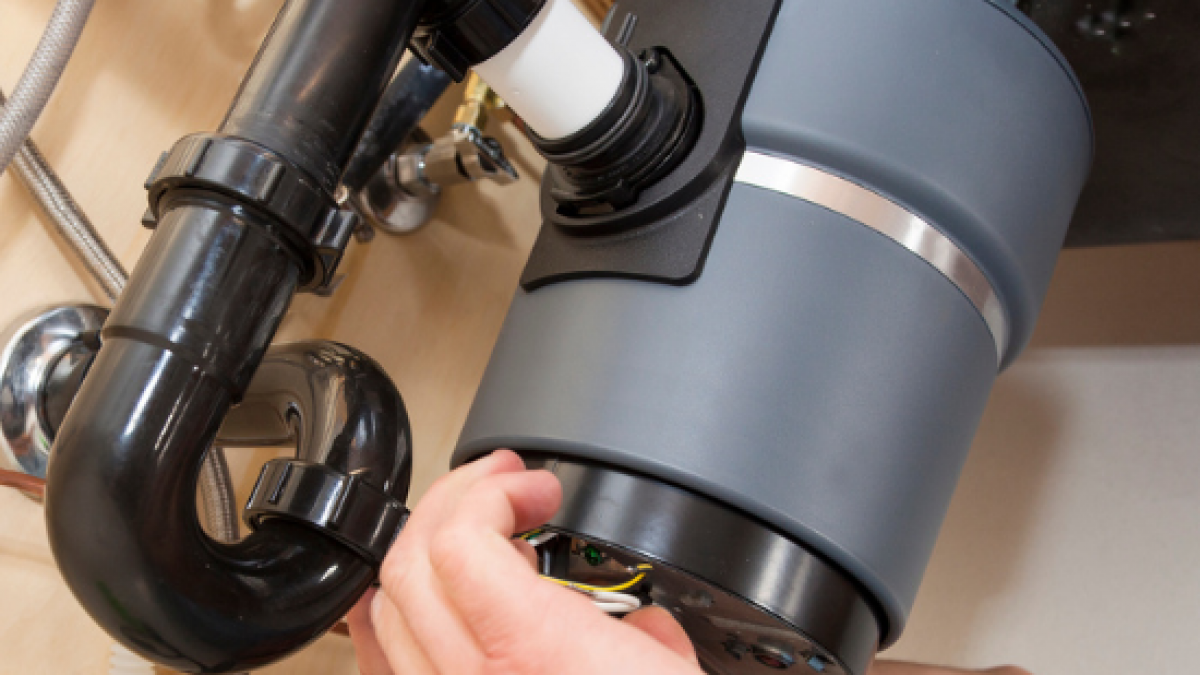Are you currently on the lookout for suggestions around The Handy Guide To Fixing Your Garbage Disposal Leaking?

Waste disposal unit are essential kitchen appliances that help in throwing away food waste successfully. Nevertheless, a dripping garbage disposal can be an aggravating and messy problem to manage. Luckily, lots of leaks can be fixed conveniently with a few simple actions. In this article, we will certainly talk about just how to take care of a leaking waste disposal unit efficiently.
Intro
Waste disposal unit are installed under cooking area sinks and are designed to shred food waste into smaller items, permitting it to pass through the pipes system easily. While these tools are normally reliable, leakages can take place over time due to deterioration, loosened connections, or damage to the device.
Typical Root Causes Of Leaks in Garbage Disposals
Worn Seals and Gaskets
Seals and gaskets play a crucial function in protecting against water from leaking out of the waste disposal unit. Over time, these elements can degrade, leading to leakages around the disposal system.
Loose Connections
The links in between the garbage disposal and the plumbing system can come to be loose over time, triggering water to leak out throughout procedure.
Cracks or Holes in the Disposal Unit
Physical damages to the garbage disposal, such as splits or holes in the real estate, can also cause leaks.
Recognizing the Source of the Leak
Prior to attempting to take care of a dripping garbage disposal, it is vital to identify the source of the leakage. This can typically be done through visual examination or by conducting basic examinations.
Visual Assessment
Inspect the garbage disposal unit thoroughly for any type of indicators of water leakage. Pay attention to areas around seals, gaskets, and link points.
Testing for Leaks
One means to evaluate for leakages is by running water with the disposal unit and checking for any type of visible signs of leak.
Tools and Materials Needed for Taking Care Of a Leaking Waste Disposal Unit
Before beginning the repair work process, gather the necessary devices and materials, consisting of a screwdriver, adjustable wrench, plumber's putty, substitute seals or gaskets, and epoxy or patching material for fixing cracks or openings.
Step-by-Step Guide to Dealing With a Leaking Waste Disposal Unit
Switch off the Power
Before attempting any type of fixings, ensure that the power to the garbage disposal unit is shut off to stop the risk of electrical shock.
Locate the Leakage
Recognize the exact location of the leakage and determine the cause.
Tighten up Connections
Utilize a wrench to tighten any type of loose connections in between the disposal unit and the plumbing system.
Replace Seals or Gaskets
If the leakage results from used seals or gaskets, get rid of the old parts and change them with new ones.
Patching Cracks or Openings
For fractures or openings in the disposal device, usage epoxy or an ideal patching product to seal the broken area.
Testing the Waste Disposal Unit After Repair Service
Once the fixing is total, test the garbage disposal by running water via it to guarantee that the leakage has been settled.
Preventive Maintenance Tips to Prevent Future Leaks
To avoid future leaks, it is essential to carry out normal maintenance on your garbage disposal. This includes keeping it clean, preventing placing non-food things or tough things down the disposal, and occasionally looking for leaks or various other concerns.
Conclusion
To conclude, repairing a leaking garbage disposal is a reasonably uncomplicated process that can be completed with fundamental devices and materials. By following the steps laid out in this post and exercising preventive upkeep, you can keep your waste disposal unit in good working condition and stay clear of expensive repairs in the future.
HOW TO REPAIR A LEAKING GARBAGE DISPOSAL
The first thing to do if your garbage disposal starts to leak or exhibits other symptoms of wear and tear is to inspect the appliance quickly. Before making any repairs, check for any obvious cracks or damaged parts and turn the disposal off at the power source. Once you have located the issue, several tools might assist you in solving it. Many resources are available to assist you in putting your disposal back in working order, whether by purchasing new parts or professional assistance from a repair technician. So immediately act if you need help with leaky garbage disposal. You can rapidly resolve the problem and enjoy smoothly functioning appliances with thorough troubleshooting and help from web resources.
Food waste is disposed of using a garbage disposal system, which grinds and flushes it down the toilet. A garbage disposal is a motorized device with one or more rotating blades that grinds up food waste into little bits. They are commonly found under the kitchen sink. A dishwasher inlet or connector is often built into garbage disposals, allowing extra water to drain into the sink’s dishwasher. Several things, such as clogs, worn-out components, or damage to the inside walls of the unit, can bring on garbage disposal leaks or other problems.
WHAT ARE SOME COMMON PROBLEMS WITH GARBAGE DISPOSALS?
Jamming: One of the most frequent issues with garbage disposals is jamming. It occurs when hard or fibrous materials, such as bones, potato peels, or fruit pits, get stuck in the disposal’s blades or impeller. It can prevent the unit from operating correctly or cause it to make unusual noises. Clogging: If too much food waste or non-food items are put into the disposal at once, it can lead to clogging. Clogged disposal may result in slow drainage or a complete backup of water in the sink. Grease and fats can also solidify inside the disposal and contribute to clogging. Leaks: Garbage disposals can develop leaks over time. The most common areas for leaks are the sink flange, the discharge pipe connections, or the dishwasher connection. Leaks can cause water damage and need to be addressed promptly. Foul odors: Food residue can build up in disposal over time and cause unpleasant odors. Bacteria and mold growth inside the unit can also contribute to foul smells. Dull blades: The grinding blades in the disposal can become dull over time, resulting in inefficient chopping and grinding of food waste. That may lead to more frequent jams and increased strain on the motor. HOW CAN YOU TELL IF YOUR GARBAGE DISPOSAL IS LEAKING?
Visible water: Check underneath the sink where the garbage disposal is installed. If you notice water pooling or dripping around the unit or any adjacent pipes, it’s a clear sign of a leak. Musty odor: A persistent or moldy smell from your kitchen sink area could indicate a hidden leak. The moisture from a leaking garbage disposal can create a damp environment that promotes mold and mildew growth. Water damage: Examine the area surrounding the garbage disposal for any signs of water damage. Look for water stains, discoloration, or warping on the cabinet floor or walls beneath the sink. Decreased performance: A leak in the garbage disposal can affect its functionality. If you notice that the disposal is not grinding food waste properly or is making unusual noises, it could be due to water damage or a leak compromising its mechanisms. Rust or corrosion: Inspect the garbage disposal for any signs of rust or corrosion. A leaking unit can cause metal components to deteriorate over time. Look for rust-colored stains or deterioration on the disposal unit or surrounding pipes. https://theappliancepeople.com/how-to-repair-a-leaking-garbage-disposal/

We had been shown that report on Garbage Disposal Leaking From Bottom from an acquaintance on another web address. Liked our blog entry? Please share it. Help somebody else check it out. Bless you for your time. Please come visit our website back soon.
Request Service